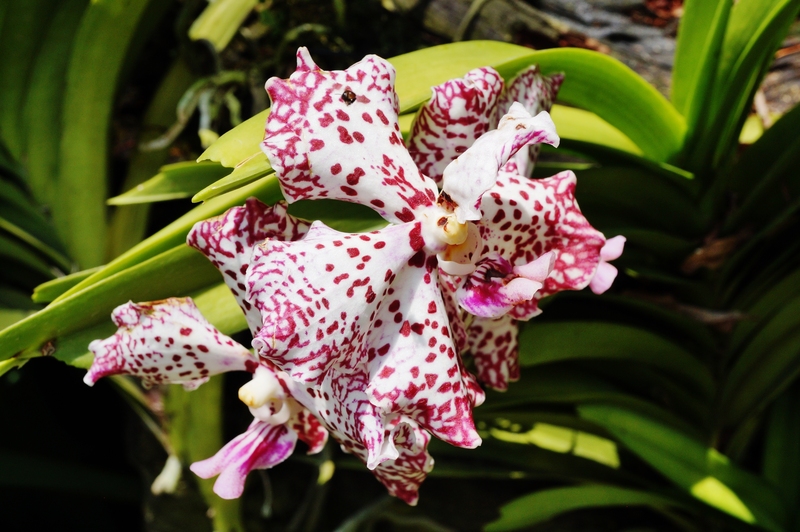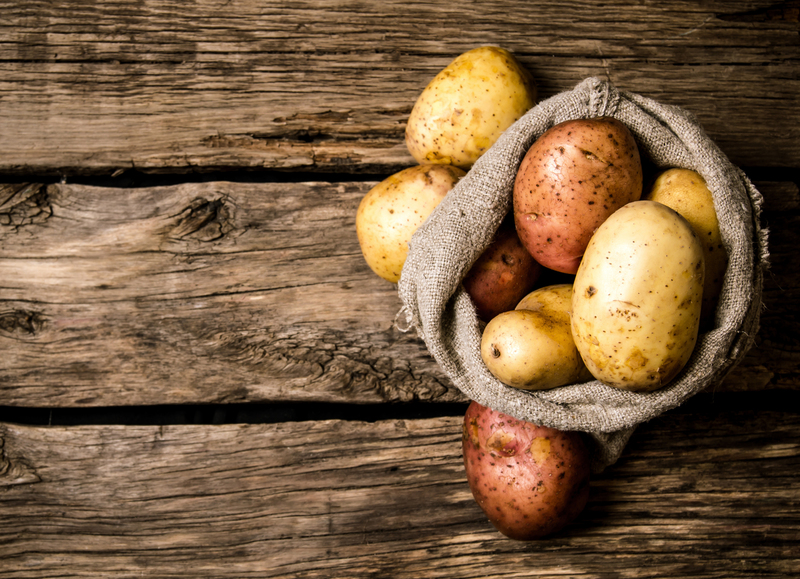Gardening Basics: Tools for Every Hobbyist
Posted on 26/06/2025
Gardening Basics: Tools for Every Hobbyist
Gardening is more than a pastime--it's an opportunity to connect with nature, nurture life, and create beautiful outdoor spaces. Whether you are a beginner or a seasoned horticulturist, having the right tools is essential for cultivating thriving gardens. In this comprehensive guide, we'll cover the fundamental gardening tools for every hobbyist, from essential hand tools to specialized equipment, and share helpful maintenance, selection tips, and safety advice along the way.

Why the Right Gardening Tools Matter
Using the correct tools not only makes gardening easier but also promotes healthy plants and prevents physical strain. The proper equipment helps you dig, plant, prune, and care for your garden efficiently. For those new to the hobby, starting with the basics and gradually expanding your collection is the best approach.
- Efficiency: The right tools allow you to work faster and more precisely.
- Plant Health: Clean, sharp tools help avoid plant diseases and damage.
- Gardener's Comfort: Correctly sized handles and ergonomic designs prevent fatigue.
Essential Gardening Tools for Every Hobbyist
Let's dive into the must-have gardening tools that every hobbyist should own. Whether you're starting a vegetable patch, nurturing flowers, or tending containers, these basics have you covered.
1. Hand Trowel
A hand trowel is indispensable for planting, transplanting, weeding, and mixing soil. Choose a sturdy, rust-resistant trowel with a comfortable grip. Stainless steel blades are preferred for their durability and ease of cleaning.
2. Pruning Shears (Secateurs)
Pruning shears are vital gardening implements for trimming plants, snipping flowers, and removing dead stems. There are two main types:
- Bypass pruners for live, green stems
- Anvil pruners for cutting dry, woody branches
Keep blades sharp for clean cuts, which help plants heal faster and reduce the risk of disease.
3. Gardening Gloves
Protect your hands from thorns, splinters, and dirt. Look for gloves that are breathable but also durable; rubber-coated gloves are excellent for muddy chores. Consider a snug fit for dexterity.
4. Garden Fork
A strong garden fork helps break up compacted soil, aerate beds, and dig up roots or weeds. Look for forged steel tines and a sturdy handle--longer handles offer better leverage for tougher jobs.
5. Spade
A spade features a flat, rectangular blade ideal for digging, edging, and lifting sod. Choose one with a comfortable D-shaped handle and a solid, sharp blade. Stainless steel models resist rust and are easy to clean.
6. Watering Can or Hose
Supplying water is essential for plant health. A large watering can with a removable rose lets you control the water flow--gentle for seedlings, stronger for established plants. Alternatively, a garden hose with an adjustable nozzle is perfect for bigger plots.
7. Rake
Rakes smooth soil, spread mulch, gather leaves, and remove debris. There are two primary types to consider:
- Garden rakes: Short, rigid tines for breaking up soil and leveling beds.
- Leaf rakes: Flexible, fan-shaped tines for collecting leaves and light material.
8. Hoe
An essential tool for weeding and shaping soil, hoes come in various styles. A draw hoe removes weeds between rows, while a stirrup hoe slices weeds at soil level.
Advanced Gardening Tools for Enthusiasts
After mastering the basics, some hobby gardeners like to add specialized tools for particular tasks. Here are a few worth considering as your garden grows.
1. Loppers
Loppers are heavy-duty pruners with long handles, ideal for cutting thicker branches up to 2 inches in diameter. They offer extra leverage to deal with mature shrubs and small trees.
2. Garden Kneeler or Pad
Protect your knees and back with a garden kneeler or a thick foam pad. Some models flip over to double as a low seat, adding extra comfort during extended gardening sessions.
3. Wheelbarrow or Garden Cart
Toting soil, compost, mulch, and plants around your yard is easy with a wheelbarrow or sturdy cart. Look for one with pneumatic tires and ample capacity to suit your needs.
4. Soil pH Tester
Understanding your soil's pH allows you to choose the right plants and adjust nutrient levels. Handheld testers are affordable and simple to use.
5. Garden Scissors
For delicate tasks like deadheading flowers or harvesting herbs, small garden scissors provide precision and control that larger shears cannot.
6. Garden Twine and Plant Supports
Plant supports and twine help train climbing plants, stake lilies, or reinforce young trees. Always opt for soft, flexible ties that won't damage plant stems.
How to Choose the Best Gardening Tools
With so many tools on the market, making the right selection can be daunting. Here are some criteria to consider:
- Quality over quantity: Start with a few sturdy, multipurpose basics before investing in niche items.
- Ergonomics: Choose tools with handles that fit your hands, are lightweight, and reduce strain.
- Material: Stainless steel and fiberglass typically offer the best durability for digging and cutting tools.
- Brand Reputation: Established brands often provide warranties, repair services, and proven quality.
Trying Before Buying
Whenever possible, try out tools before purchasing. Comfort and balance are subjective, and what feels right to one gardener may not suit another. Specialty garden supply stores often let you handle samples, so take advantage of this opportunity.
Considering Your Garden's Size and Type
A small container garden or balcony may require only a trowel, pruning shears, and watering can, while large backyard beds might justify a spade, fork, and wheelbarrow. **Match your toolkit to the scale and goals of your garden**.
Protecting and Maintaining Your Gardening Tools
Proper care makes your investment last, saving money and ensuring optimum performance. Here's how to keep your essential gardening equipment in top condition:
- Clean after use: Remove soil and sap with a stiff brush or damp cloth. Dry thoroughly to prevent rust.
- Sharpen cutting tools: Use a sharpening stone or file to keep pruners, loppers, and shears razor-sharp.
- Oil moving parts: Apply a light oil to hinges and blades to prevent corrosion and sticking.
- Store properly: Hang tools indoors or in a dry shed. A pegboard keeps everything organized and off the ground.
Tip: At season's end, wash all tools, inspect for wear, and repair or replace damaged items.
Staying Safe While Gardening
Gardening is rewarding, but it's important to protect yourself from repetitive strain, cuts, punctures, and sun exposure. Follow these safety tips:
- Wear gloves and protective eyewear when pruning, digging, or using power tools.
- Lift with your legs, not your back, when moving heavy loads like soil or pots.
- Use kneelers or pads to prevent knee pain.
- Work in the cool of the day, wear a hat, and stay hydrated during hot weather.
- Keep first-aid supplies handy in case of scrapes or insect bites.
Innovative Gardening Gadgets for Modern Hobbyists
For those who enjoy technology and want to maximize efficiency, the gardening world offers a variety of modern gardening tools and gadgets. These include:
- Automated irrigation systems with timers for consistent watering.
- Garden apps to track plant health, reminders, and design layouts.
- Solar-powered garden lights for late-day tasks.
- Compost tumblers to speed up decomposition and manage kitchen/garden waste.
While not essential for everyone, these tools can streamline your routine and boost your garden's performance.
Caring for Different Types of Gardens
Container Gardening
- Lightweight tools--mini trowels, hand forks, and pruning snips--are useful for working in pots.
- Watering cans with narrow spouts ensure accuracy and prevent overwatering.
Vegetable and Herb Gardens
- Seedling dibbers and small rakes help sow and thin seedlings.
- Row markers and garden twine keep planting organized.
Flower Beds and Borders
- Precision pruners and long-reach watering wands facilitate flower care.
- Edging tools create sharp, attractive bed borders.

Common Mistakes to Avoid When Choosing Gardening Tools
- Opting for cheap, flimsy tools that bend or break easily
- Ignoring ergonomic features, leading to discomfort or injury
- Neglecting tool maintenance, which can shorten life and reduce effectiveness
- Buying too many niche tools before mastering the basic gardening essentials
- Overlooking storage solutions, causing tools to rust or become lost
Conclusion: Equip Yourself for Gardening Success
Building a rewarding gardening experience starts with the right tools, careful selection, and regular maintenance. From the foundational trowel, fork, and spade to advanced gardening equipment like soil testers and automated watering systems, your toolkit should grow with your skills and interests.
With this guide to gardening basics: tools for every hobbyist, you'll be well-equipped to tackle any project--sowing seeds, pruning roses, or harvesting your first homegrown tomatoes. Remember, quality tools are an investment in the health of your plants and the enjoyment you'll gain in your gardening journey.
Get started today by assembling your gardening essentials, and watch as your garden--and your confidence--flourish season after season.

